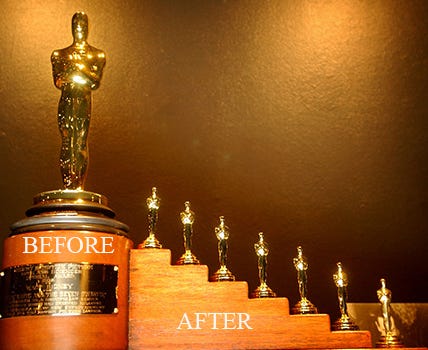THB #95: Oscar Shrinkage
I have one word for you. Plastics.
I have a second word for you. Ouroboros.
A lot of time has been spent, particularly this season, trying to find answers to the question, “Why is Oscar dying?”
But what really struck me yesterday, as the Academy luncheon, which used to be a big deal, was instagrammed by our current wave of media, that the bigger picture of what is happening to Oscar never really gets discussed. And I don’t mean that the kids today just want to look at their phones.
The Oscar Industrial Complex didn’t really exist when I started covering all this in earnest, 26 years ago. Screeners were frowned on. And back then, they were on VHS.
The fact that Harvey Weinstein had shoved his fat fingers into the pie - assisted by a bevy of mostly women, who were very, very smart - was seen as a constant outrage. My first season swimming in the deep end of all this was the year of The English Patient.
Of the five Best Picture nominees, only one was from a major studio… and that was back wh…
Keep reading with a 7-day free trial
Subscribe to The Hot Button by David Poland to keep reading this post and get 7 days of free access to the full post archives.




